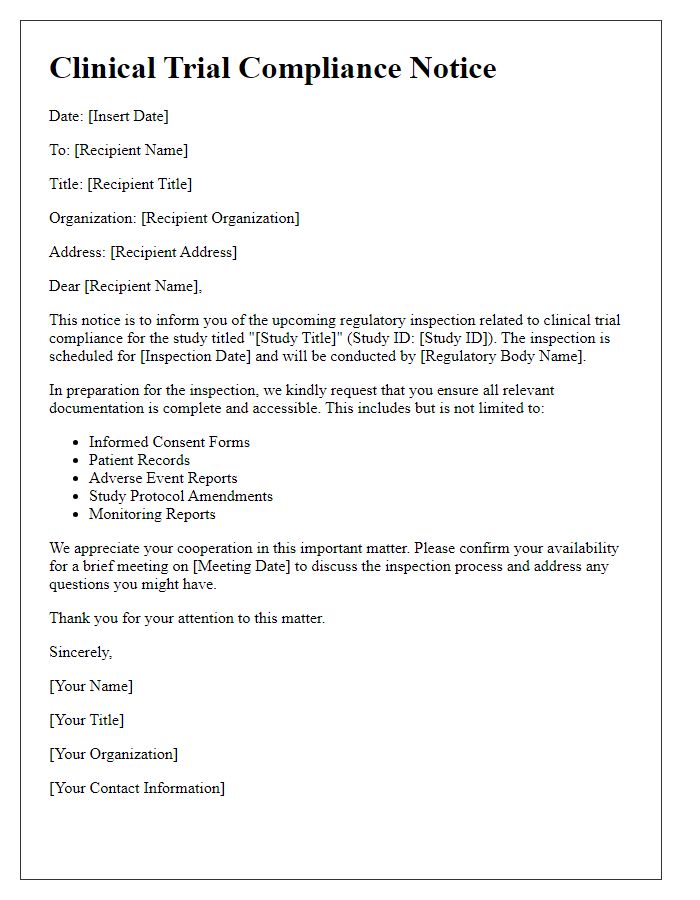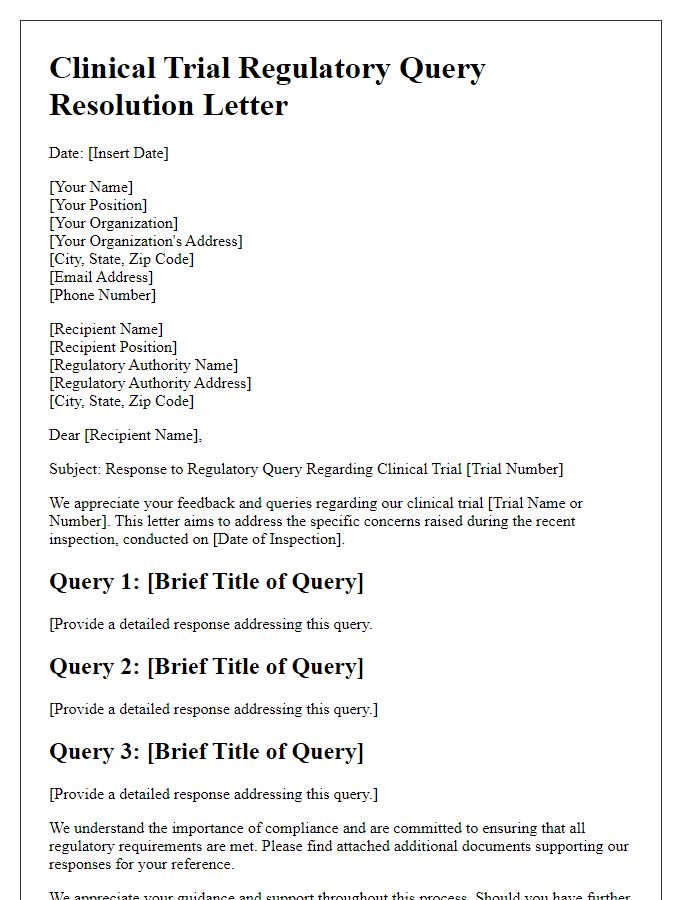Navigating the complexities of clinical trial regulatory inspections can feel daunting, but with the right guidance, you can approach the process with confidence. Regulatory bodies play a crucial role in ensuring the safety and efficacy of new treatments, making inspections an essential part of the journey. Whether you're preparing documentation or proactively addressing potential concerns, understanding the requirements can streamline your experience. Ready to learn more about how to navigate these inspections effectively?

Introduction and Purpose
Clinical trial regulatory inspection serves as a critical assessment process to ensure adherence to guidelines established by health authorities, such as the Food and Drug Administration (FDA) in the United States, or the European Medicines Agency (EMA) in Europe. The primary purpose focuses on verifying compliance with Good Clinical Practice (GCP) standards, which safeguard the rights, safety, and well-being of trial participants. This inspection evaluates the integrity of data collected from clinical trials, plays a vital role in maintaining public trust, and ensures that investigational new drugs or medical devices meet necessary regulatory requirements prior to market approval. Locations for these inspections often include clinical research sites, laboratories, and facilities where clinical activities occur, providing an opportunity for regulatory bodies to assess operational protocols and participant enrollment processes.
Trial Overview and Protocol Details
A clinical trial regulatory inspection involves comprehensive reviews of protocols, methodologies, and adherence to ethical standards. The trial, conducted under the oversight of the Food and Drug Administration (FDA) and board of Institutional Review Boards (IRBs), aims to evaluate the efficacy of a new medication, Drug XYZ, for treating Type 2 Diabetes Mellitus. This multicenter trial consists of 12 sites located across the United States, including major cities like New York, Chicago, and Los Angeles. Approximately 500 participants aged 30-65, diagnosed with Type 2 Diabetes, will be recruited for a 24-week study duration. The trial utilizes a double-blind, placebo-controlled design to ensure unbiased results, with primary endpoints focusing on changes in HbA1c levels. Detailed monitoring procedures involve regular assessments every four weeks, adhering to Good Clinical Practice (GCP) guidelines. Additionally, quality assurance measures, such as bi-weekly audits and data safety monitoring boards, are implemented to maintain strict regulatory compliance and participant safety throughout the study.
Regulatory Compliance and Credentials
Regulatory compliance is crucial during clinical trial phases, ensuring adherence to guidelines established by authorities such as the Food and Drug Administration (FDA) in the United States. During a regulatory inspection, credentials of the research team must be comprehensive, including certifications from Good Clinical Practice (GCP) training, Institutional Review Board (IRB) approvals, and records of previous audits. Documentation for the trial's investigational product should detail its safety profile and efficacy data, substantiated by previous studies. The site of the trial, whether located in metropolitan regions such as New York City or academic institutions like Johns Hopkins University, should have a robust regulatory infrastructure. Inspection teams typically review patient consent forms, case report forms, and data management systems, ensuring all personnel involved are well-trained and adequately supervised. Ensuring compliance creates confidence in the clinical trial results and safeguards participant welfare.
Contact Information and Availability
In preparation for the upcoming clinical trial regulatory inspection, it is essential to provide accurate contact information for all key personnel involved in the study. This includes the Principal Investigator (PI), whose responsibilities involve overseeing the trial's integrity and participant safety, often located at research institutions like the University of California or Mayo Clinic. Additionally, include contact details for the regulatory affairs manager, typically responsible for ensuring compliance with guidelines from agencies such as the Food and Drug Administration (FDA) or European Medicines Agency (EMA). Ensure this information is current, reflecting direct phone numbers and professional email addresses. Availability of these contacts should be specified, particularly noting any out-of-office periods during inspection dates. This proactive approach enhances communication and fosters a collaborative environment during the review process.
Conclusion and Acknowledgment
During the clinical trial regulatory inspection process, a thorough examination of protocols, data management, and participant safety is essential for ensuring compliance with FDA guidelines. Inspectors often assess documentation such as the investigational new drug application (IND) submitted to the FDA, informed consent forms, and adverse event reports, with meticulous attention to detail. Recognition of the efforts made by research staff and the importance of transparency in communications reflects the commitment to maintaining the highest ethical standards. The conclusion of an inspection often includes a summary of findings, areas of strength, and recommendations for improvement, providing valuable feedback for future studies and reinforcing the integrity of clinical research conducted at institutions like the Johns Hopkins Hospital or Mayo Clinic. Acknowledgment from regulatory bodies signifies the collaborative effort between the overseeing agency and the research team, ensuring that patient welfare remains the paramount concern in clinical trials.
Letter Template For Clinical Trial Regulatory Inspection Samples
Letter template of clinical trial compliance notice for regulatory inspection.

Letter template of regulatory submission acknowledgment for clinical trial inspection.

Letter template of clinical trial investigator meeting invitation for inspection.

Letter template of clinical trial observation response for regulatory inspection.

Letter template of clinical trial data request ahead of regulatory inspection.

Letter template of clinical trial regulatory query resolution for inspection.











Comments